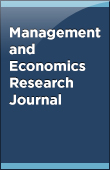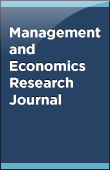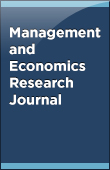


Short Description: Peer-Reviewed, Open-Access, Google Scholar indexed, Cabells WHITE-LISTED journal, publishing scholarly articles in finance, marketing, human resource, Information Technology, along with manuscripts documenting Economics research data and analysis.
E-ISSN: 2469-4339
P-ISSN:
Publisher: HATASO - SynergyGlobal
Institute:
Address: Plot No. 15, Ground Floor, 3rd Cross, Balaji Nagar, Oulgaret
City: Puducherry
State: Puducherry
Country: India
ZIP: 605010
Phone:
Email: [email protected]

10.18639/MERJ.2025.9900116
Original Research Article
Nov 17, 2025
Cervical cancer remains one of the leading causes of cancer-related deaths among women in Brazil and worldwide, despite being largely preventable through regular and effective screening. This study, through a literature review, analyzes the socioeconomic barriers that hinder early screening, highlighting their impacts on both female mortality and public health costs. The analysis, based on a literature review of primary and secondary data, indicates that strengthening organized screening programs and HPV vaccination campaigns not only reduces mortality but also represents a cost-effective strategy given the expenses associated with treating advanced stages of the disease. The results highlight the importance of targeted public policies that consider regional and socioeconomic inequalities in access to prevention. The study contributes to the debate on prevention as an instrument for reducing inequalities and for economic sustainability in the health system.

10.18639/MERJ.2025.9900115
Original Research Article
Oct 20, 2025
This study investigates the impact of government subsidies on the expansion of vineyard surface areas and the production of alcoholic beverages in Kosovo. Over recent years, subsidies have played a pivotal role in revitalizing Kosovo’s viticulture and alcohol production sectors, leading to a notable increase in vineyard acreage and a subsequent rise in local wine and spirits’ output. By analyzing subsidy allocations, vineyard expansion data, and production figures, this research assesses the effectiveness of these financial incentives in fostering industry growth. The findings indicate that while subsidies have stimulated significant development in Kosovo's viticulture and alcohol production, they also pose challenges related to market dynamics, economic sustainability, and potential over-reliance on government support.

10.18639/MERJ.2025.9900114
Original Research Article
Sep 30, 2025
This article investigates the impact of human capital on economic growth, emphasizing the importance of education as a key factor in increasing worker productivity and promoting economic development. The analysis explores various theories, including neoclassical and endogenous growth models, highlighting the positive externalities associated with the accumulation of human capital. Using panel data for the 26 Brazilian states and the Federal District between 2012 and 2020, the study examines the relationship between the proportion of people with secondary education, energy consumption, schooling, internet access and GDP. The results highlight the importance of education and access to services as critical drivers of sustainable economic growth. The fixed effects panel model, chosen as the most appropriate, reveals a positive and significant impact of secondary education and energy consumption on GDP. The findings suggest that investments in human capital, particularly in education and innovation, are essential for long-term economic development.